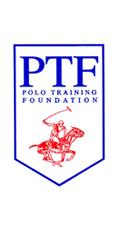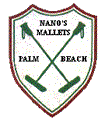A strong Argentine team edged defending champion Chile in the final of the XI FIP World Polo Championship in Sydney Australia, Oct. 29 to earn its fifth such title, while USA settled for fourth place.
The championship pitted the winners of five zone playoffs, along with the second place team in Zone C—the largest zone, the host country’s team and the defending champion, all hoping to take home the title. The eight teams were divided into two groups, with each team playing the others it its group. The team with the best record in each group advanced to the final, while the second place team in each group advanced to the third place match. Like the Olympics, gold, silver or bronze medals are awarded to the top three placings.
The 10- to 14-goal championship, which began in 1987, is generally held every three years in a different location around the world. The event is limited to 14 goals in order to get the most teams throughout the world.
Horses are provided by the host and equally pooled among the teams. An appointed horse master grades each horse as either A, B or C, based on its playing ability. The horses are divided into eight groups—one for each team—with each group having the same number of A, B and C horses. The teams then draw which group of horses they will play. Each group has about 30 horses, enough for each player and spares in case of injuries. The quality of the horses this year was arguably the best the tournament has ever seen. The players lending the horses really got behind the tournament, bringing their best horses and allowing them to be used at no cost.
Prior to winning its zone, a hopeful U.S. team accepted an invitation from Wallace Ashton to train in Australia for a month this past spring. The training seemed to pay off as the U.S. team downed Mexico and Guatemala to advance to the championships.
Coach Joel Baker got to work determining which players he would take to represent the U.S. in Australia. Tournament conditions require players be rated between 2 and 5 goals so there are only a few combinations that work, including 5-, 4-, 3- and 2-goal players; three 4-goal players and a 2; and two 5s and two 2-goal players. “It became obvious to me, looking at how the other teams were forming, that we needed it stronger in the middle, that’s why we went with two fives in the middle, to counterbalance these other teams who were really strong,” explained Baker.
That meant he’d have to find a pair of two goalers. Baker said, “The dilemma in the United States is our 2-goal players, unfortunately, haven’t had a lot of highgoal experience. If they have, they haven’t been asked to hit the ball, they’ve been asked to block people. In our process, everyone is equal. If a 2-goaler has the ball, a 5-goaler is running for the pass, he’s not coming behind him and telling him to leave it.” Baker worked with the 2-goalers to be active particpants instead of blockers.
Of the eight players on the roster for the zone playoff—all members of Team USPA—three went to Australia (Jesse Bray, Felipe Viana, Daniel Galindo). Team USPA members Jimmy Wright and Matias Gonzalez, both 2-goals, were added to the roster, along with 5-goal Carlucho Arellano as alternate and assistant coach.
With the players in place, the team trained at Grand Champions Polo Club in Wellington, Florida for two weeks prior to boarding the plane for Australia. Baker said the experience was very beneficial, especially for the 2-goal players who needed the extra playing time. “Melissa [Ganzi] and the staff there gave us everything we asked for. They were fantastic. All six guys played, no one sat around. They mixed the teams around, they gave the guys great competition,” said Baker. “It really helped us a lot and it really helped our 2- goalers because they needed that kind of work, they needed the extra polo.”
The team boarded a plane on Sunday, Oct. 15, and arrived in Australia Tuesday morning. Once the plane touched down in Australia, the team headed directly to Ashton’s farm to play a practice. Ashton generously provided his personal horses for the team to ride and practice on the off days throughout the tournament.
The event kicked off with a draw for the pony strings and a team presentation on Wednesday, Oct. 18. The following day the teams got to practice the horses in their strings, which Baker said were pretty equal overall. Baker said USA went well in its practice against New Zealand, winning by something like 7-1.
Friday was an off day so the U.S. team practiced Ashton’s horses to stay sharp and worked on penalty shots. With over 300 horses in the competition, some shipped in from thousands of miles away, some strings were kept outside, while others were kept in stalls. Unfortunately, the U.S. team’s string was kept outside without shelter and had to endure a storm that blew through, packing 50-70 mph winds and heavy rain the day before the first match. To make matters worse, three of the teams ‘A’ horses were out due to injury before the first game.
Opening day included jousting and vaulting demonstrations, an art exhibit, opening ceremonies and finished off with live music. One player from each participating country rode in a parade during the opening ceremonies and later presented its country’s flag. Daniel Galindo did the honors for the U.S.
Meanwhile, the U.S. team took to the field to play its most difficult game of the tournament, against Argentina. The South American team jumped out front early in a fast, open game, taking a 7-4½ lead at the half. Baker said USA’s horses seemed flat, and he wondered if riding out the previous day’s storm outside (the Argentine team’s horses were stabled), was taking its toll. But the bigger problem was the Argentines, led by veteran player and former 8-goaler Héctor Guerrero, who were commanding the field and outplaying the Americans. The Argentines were quicker and sharper. USA improved in the second half, and managed to match Argentina 5-5, including a pair of goals in the closing minutes, but was unable to make up for the first-half deficit.
It was a disappointing loss for a team that just two years before narrowly lost to Chile in overtime of the 10th FIP championship after going undefeated in preliminary play, including an overtime defeat of Argentina.
Baker said, “[Our style] worked well for us in Chile, and so a lot of the other teams went to school on us. The Argentine team was built around that process. They didn’t come with a lot of young hotshots, they had a guy in his mid-40s who was 8 goals at one time ... They were a running, anticipating team.”
Now, the only chance for USA to get to this year’s final was if Argentina lost a game, while the U.S. won its remaining games, meaning three teams would be tied with 2-1 records. Still, the U.S. would need to have the highest net goals to advance. All the U.S. team could do was focus on winning its next two games.
The local crowd was out in full force to cheer on the home team as it took on Spain in the second match of the day. In a spirited game, Australia led 5-2 after 14 minutes. Spain fought back, tying the match at 5-5 at the half and edged ahead 9-7 in the last period. But with the crowd behind it, Australia managed to knot the score and force overtime. It scored the golden goal to take its first win, 10-9.
The next day, England took on India for Group B. It was not much of a game as India found the goal just once while England pounded the goal 16 times.
The second game of the day pitted Chile against New Zealand. New Zealand missed numerous shots at goal and couldn’t break through the Chilean defense. It was a closer match than the first, but still ended in a wide spread with defending champion Chile ahead by seven, 9-2.
The horses earned a few days rest before Argentina faced Spain and Australia took on USA. In the first match, Spain began with a 1½-goal handicap and managed to put the first goal on the board. The five-chukker match last two hours and saw three players fall. After closing the first chukker 2½-2, Spain couldn’t keep up as Argentina outscored it 10-1 in the last four chukkers.
With Spain having lost its second match, USA would need to beat Australia by at least three in the event Australia beat Argentina, forcing the three-way tie. USA took an early 3-1 lead, but Australia knotted the score at 3-3 by the end of the third. The teams traded goals in the fourth but Bray broke the tie. On another play, Bray had a fantastic 80- yard neck shot to goal. The flagger called it in but the umpires weren’t sure. When asked, Bray admitted it was out. “No one in the stands could believe somebody would call their own goal out, but we still beat them by two goals. And Jesse got the Sportsmanship Award for the tournament,” said Baker.
Australia hustled to level the score again early in the sixth, but a penalty conversion by Viana gave USA the 6-5 advantage. Wright found the mark with a nearside neckshot to go up 7-5. With just a minute on the clock, USA took a penalty from mid-field but was unable to reach the goal before time ran out.
Ahead by just two, USA was out of chances, even if Australia beat Argentina.
Back to Group B, Chile met India. After its big loss to England, India shuffled the player positions and were better organized. It marked the Chileans closely, holding them to three goals in the first half, but were only able to capitalize on one out of five scoring opportunities. The Chileans got back to basics, outscoring India 8-1 in the second half.
Later in the day, a confident England, fresh off its 16-1 drubbing of India, met a New Zealand team ready to prove itself after its first loss. Five-goaler Glen Sherriff replaced Cody Forsyth, and the team managed to keep the game even, 4- 4, after the first 14 minutes. New Zealand was winning the lion’s share of the throw-ins and penalty shots, while its 2-goalers were keeping the pressure on England’s 2-goalers. Its strategy was working as England fell 11-8. “They came out, they turned quicker, they hit harder and they beat us,” said team captain Satnam Dhillon.
England would have to beat Chile by five goals in order to go to the final. For New Zealand, its only hope was playing for bronze, and only if it beat India, and England lost by a lot to Chile.
The last of the playoff matches were played on ‘Super Saturday’ in scorching heat. First up, New Zealand came from behind to edge India 9-8. Then, USA played Spain in the last playoff match. USA got off to a good start, leading 3-1½ after the first chukker. Spain rallied before halftime, but USA powered ahead for a 15-9½ finish. Bray said, “We started well but started losing throw-ins in the middle chukkers. We weren’t really finding any open players. [Spain] did a really good job on defense. ... In the second half we were in control again.”
England played its last preliminary against Chile. It trailed 4-1 before mounting a comeback and winning 8-5.
The last match pitted Argentina against Australia. Argentina played another fast, open game, winning 9-5½. The final would be between the undefeated Argentine squad and Chile, after England played USA for the bronze the next day.
“It’s 95 degrees. Again, our horses [were] out in the field with no shelter. (England’s horses were apparently stabled). The first chukker, we’re on flat horses. They get three goals. And our guys just dug in ... they caught them and got by them. We are a goal ahead with less than a minute left. The English made a long, desperate shot that went into goal and so now we’ve got overtime.
“We had three opportunities to win it. Unfortunately, we didn’t get it in. We played the overtime chukker on our end of the field. They got one shot [that] went into goal, they scored and won it,” said Baker. England took the Bronze.
The grand finale had Argentina against Chile and it was a game to remember. Chile received a one-goal handicap to start and Argentina scored the only goal of the first. The teams traded goals in the second, ending 2-2. Chile was covering Argentina closely, keeping it from playing its fast, open style. Argentina was doing everything it could to shake the Chilean defense and finally got the narrow edge with a 3-2 halftime lead.
Chile bounced back in the fourth, outscoring Argentina 2-1 to knot the score at 4-4. Chile was keeping pace, and halfway through the fifth, managed to get the 5-4 advantage. Chile kept getting ahead only to have Argentina even the score. Argentina leveled the score, 5-5, but Chile’s Andres Vidal passed a long ball to teammate José Pereira who outmanuevered Argentina’s No. 4 Tomas Panelo and shot the ball through the goal. A minute later, Argentina’s 17-yearold Panelo made up for the misstep when he cooly sunk a safey to knot the score to end the fifth 6-6.
The teams continued to wrestle for control throughout the chukker. With time running out and under pressure from Panelo, Vidal shot a hail mary from 120 yards, splitting the posts with 30 seconds left to take the lead. Just when it looked like Chile had the game, Argentina won the throw-in and headed directly to goal. Lucio Fernandez Ocampo found the mark to tie the score with just seconds on the clock, forcing overtime. The Chileans thought Ocampo had fouled, but there was no whistle.
In the extra time, Chile’s Pereira got possession of the ball at midfield and shot a long pass to his teammates but it was intercepted by Ocampo who ran the ball through the posts for the win. After scoring Argentina’s last two crucial goals, Ocampo was named MVP.
Overall, it was a great competition with plenty of talented players.
“I was very proud of our guys. ... If you talk to the umpires, they are all highly complimentary of what great sportsmen our guys were,” said Baker.
“The guys did fantastic without getting any luck. Jesse Bray played 7-, 8-goal polo the whole time. Felipe did a phenominal job of running the team and keeping everyone encouraged. I was very proud of being part of the effort they made. And on the sidelines, Cacho Galindo and Carlucho were giving 110 percent in encouragement, helping out between chukkers, helping with horses. Our regret is we didn’t have the results to show how well they did.”
By all accounts, World Polo Championship CEO Peter Higgins did an outstanding job organizing the event, having great facilities, and with Jose Lartirigoyen, putting together an excellent group of quality horses.
WORLD COACH
by Ernesto Rodríguez
Argentina’s coach Diego Braun guided teams to two world titles in less than a year. In January, he was in charge of Argentina’s threesome that was crowned in the FIP Snow Polo World Cup in Beijing. More recently, in October, he coached the team that lifted the cup in the XI FIP World Polo Championship in Sydney.
“It was two long trips that paid off,” Braun acknowledged in an interview with Polo Players’ Edition.
PPE: How did you manage to take over both national teams?
Diego Braun: For the China tournament, the Argentine Polo Association thought about me because I have experience in the snow, because I played many tournaments in Europe. We chose players who knew what it was like to play winter polo. We got a title Argentine polo had never achieved. The achievement in Australia was different because Daniel González was the coach for the Zone B Playoff in January in Uruguay. He couldn’t go to Australia so he asked me to go, which was an honor.
PPE: When did you start working with the players?
DB: The four starters were already chosen (Lucio Fernández Ocampo, Héctor Guerrero, Valentín Novillo Astrada and Tomás Panelo). They had won the qualification in Punta del Este. And between Daniel and me, we decided on the four substitutes (Federico Rooney, Ignacio Bello, Iván Maldonado and Federico Panzillo). I have to thank Daniel because much of the triumph was his. He is a person with a lot of experience who did a great job searching out the talent. He also gave me a lot of help with the practices we played in the association’s fields in Pilar, outside Buenos Aires.
PPE: What style of game did you want to impose?
DB: The style of play that we wanted to impose was very dynamic, with quick movements, long hits and without breaks. We wanted to overcome the rest by mental speed and gallop. We wanted to take advantage of the fact that we know how to play a four-man game against teams that practice a more stationary polo.
PPE: How were each of the matches?
DB: The first game against the USA was the most complicated of the three preliminaries because it was our debut and they came very well prepared, with serious previous work. The American team had traveled to Australia with time to acclimate and has good players. Defeating them grew our confidence to face Spain and Australia in the next games and defeat them without problems.
The final was a match in three phases. The first three chukkers we dominated but had many chances to score that we could not achieve, which is why we could not take off in the score. There, Chile grew and the game was wide open, being available for either of the two teams. In the extra chukker we added heart and guts to our good play to end up winning with a golden goal.
PPE: Which player was the most prominent?
DB: In each match shone a different man. Novillo Astrada played a great match against USA. Panelo stood out in the game against Spain. With Australia, Guerrero shone with his vitality. And in the final, what Fernández Ocampo did was decisive. That shows that it was a true team, more than one main figure.
PPE:What did you think about the organization?
DB: The organization of the tournament was perfect. The club is nice, has excellent facilities and there were many activities for the attendees even when there was no matches. The playing fields were very good and we had a high level of horses, distributed equally among all the teams. There has never been a group of horses as good as there were for all the teams.
PPE: What is your balance of this unforgettable year?
DB: It was a nice coincidence to be in charge of two national teams that ended in victory. Our pride is that the best polo in the world is played in Argentina. Palermo is the most important tournament and we have many 10-goalers. So, Argentina must also participate in these lower-handicap tournaments to support polo worldwide and promote its dissemination. Argentina should support everything that serves to make our sport more known, taking risks and competing because that’s how the polo will grow. |
by Gwen Rizzo
Photos by Marcos Cerdeira for Pololine, courtesy of USPAGL
|










